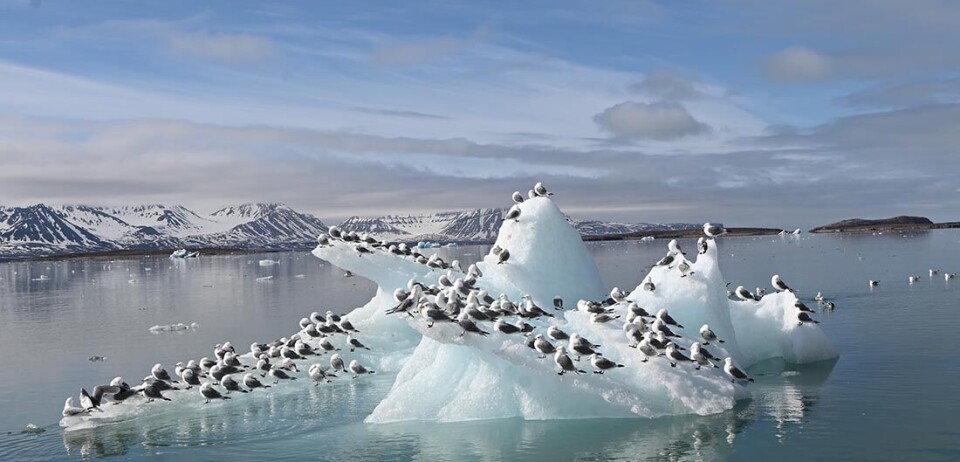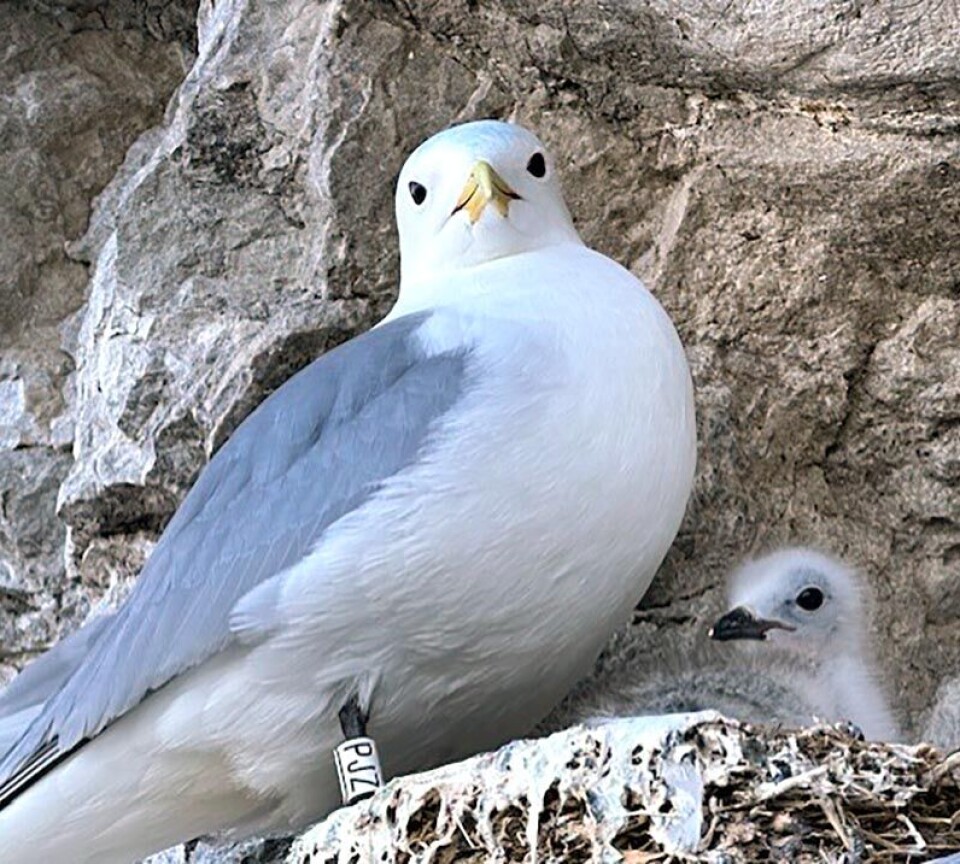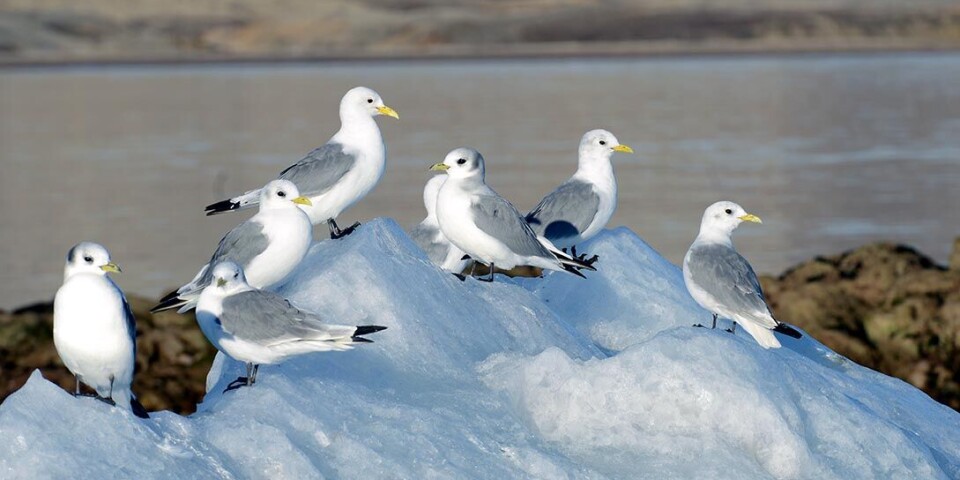THIS CONTENT IS BROUGHT TO YOU BY NTNU Norwegian University of Science and Technology - read more
High mercury levels found in birds on Svalbard
Kittiwakes on Svalbard have so much mercury in their bodies that it may affect their reproductive ability.

Researchers have measured mercury levels in seabirds that live on Svalbard. They found levels that are believed to have negative health effects on the birds.
“We don’t know what effect this has on the population level, but we know that mercury affects reproduction, behaviour, and survival,” says Silje Lundgren, a researcher at NTNU’s Department of Biology.

Mercury is toxic to both humans and animals even in small concentrations.
It affects the hormonal and immune systems and can cause damage to the nervous system.
Struggling to survive
Lundgren studied the occurrence of various heavy metals and environmental toxins in Svalbard birds as part of her master’s thesis at NTNU, supervised by Professor Veerle Jaspers.
In July 2017, she took samples of feathers from adult black-legged kittiwakes and Brünnich’s guillemots in Kongsfjorden on Svalbard, as well as blood plasma samples from the kittiwakes.
The results, which have been published in the scientific journal Science of the Total Environment, showed high levels of mercury in both bird species. The level in kittiwakes was above the threshold for what can negatively affect reproductive ability.
In the kittiwakes, the level of mercury was higher than what has previously been found in studies of seabirds in the Arctic.
“High concentrations of mercury will not necessarily have a negative impact on the individual level. But seabirds in general are struggling with survival and reproduction. Mercury can then be a factor contributing to population decline, along with other things,” says Lundgren.
Climate change and bird flu
Researcher Geir Wing Gabrielsen at the Norwegian Polar Institute has closely monitored Norwegian seabird populations for several decades. He agrees with Lundgren that high mercury levels can be one of several unfortunate factors for the seabirds.
“Seabird populations are declining faster than other bird populations. On the Norwegian mainland, there has been a drastic decline in a number of seabird species in recent years,” says Gabrielsen.
Norway’s national monitoring programme (SEAPOP) follows 35 species of seabirds.
Of these, 13 species have declined by more than 50 per cent over the past 20 years.
Climate change, pollution, loss of breeding areas, hunting, and diseases such as bird flu are to blame.
In the Arctic, where the temperature increase has been the highest in the world, land ice is now melting. This means that metals and environmental pollutants stored in snow and ice are released and enter the food chain.
“The lion’s share of the pollution in the Arctic comes from Asia, where they have a high consumption of coal, including in industrial production. When air masses blowing north meet northern winds, the pollution is deposited in snow and ice,” says Gabrielsen.
Changes in food availability and diet
In Svalbard, 57 per cent of the land area is covered by glaciers, and over 900 kilometres of the coastline has glaciers that break off, calving into the sea.
In total, this means that 45 billion tonnes of meltwater mixed with sediments flows into the coastal waters every year.
The land-based sea ice in Svalbard fjords is disappearing. At the same time, climate change is causing warm Atlantic water to flow northward, bringing with it animals and other organisms from lower latitudes.
Seabirds such as kittiwake and Brünnich’s guillemot, which previously lived on polar cod, have switched to eating Atlantic fish species, such as herring, capelin, and krill.
This has had a positive effect on some seabird species in Svalbard. Access to food has been good. At the same time, researchers are finding a connection between what the birds eat and their mercury levels.
Coal and industry in Asia
Researchers at the Polar Institute have seen how mercury levels in the kittiwakes on Svalbard increased after the birds changed their diet from Arctic to Atlantic fish species.
“This was primarily linked to an increase in the temperature in the surroundings and in the ocean,” says Gabrielsen.

Svalbard is now warming twice as fast as the rest of the Arctic, and five times faster than the global average.
“When the glaciers melt, the pollution stored in the glaciers will be released and flow into the sea. The mercury is taken up by nutrient organisms in the fjord. This causes the kittiwakes feeding in the fjord to have increased mercury levels,” says Gabrielsen.
Urgent need for Asia to cut emissions
Asian countries accounted for half of the world’s mercury emissions to the atmosphere in 2015, according to the Arctic Monitoring and Assessment Programme (AMAP).
Much of this is due to the use of coal as an energy source.
Researchers believe it is urgent to get Asian countries like China to reduce their emissions.
“Today, industry produces 250,000 different environmental pollutants that are released into the natural environment via the atmosphere, rivers, and ocean currents. The chemical industry is the fastest growing in the world," says Gabrielsen.
Recently, the Research Council of Norway allocated funds to the project ClimACTox, where researchers will study how the effects of pollution and climate change together impact seabirds in the Arctic.
“Mercury is also one of the priority pollutants under investigation in that project, meaning we will follow up on the levels in different seabirds along with their population trajectories in Norway and on Svalbard,” says Jaspers.
Reference:
Lundgren et al. Metals and other trace elements in plasma and feathers of seabirds breeding in Svalbard, Science of The Total Environment, vol. 952, 2024. DOI: 10.1016/j.scitotenv.2024.175895
———
Read the Norwegian version of this article on forskning.no
More content from NTNU:
-
Politics on Facebook: Populist parties choose divisive issues on purpose
-
Social media is connected to cyberbullying – but not how we thought
-
Forskere ved NTNU får nesten 24 millioner av EU for å lage nye strømomformere
-
This helps the youngest children enjoy school more
-
Can we tap the ocean’s power to capture carbon?
-
Researchers have uncovered major problems in Norway's salmon industry





































